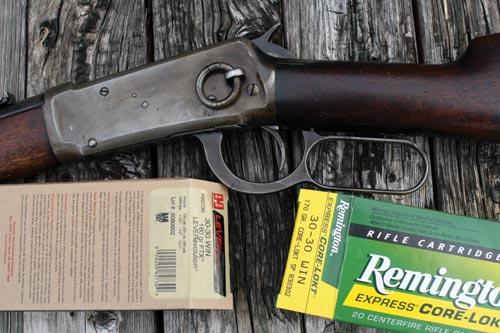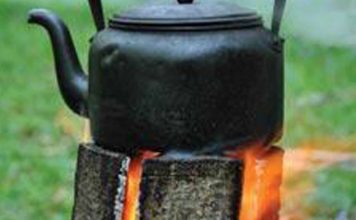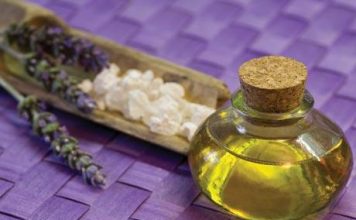 |
|
| Issue #144 • November/December, 2013 |
I generally recommend that people buy guns the way they’d buy power tools, or automobiles, or homes. Assess your needs, analyze your budget, correlate it all with your ability to utilize the thing you’re buying, and you’ll probably be happy with your purchase and get a lot of productive use out of it.
It’s the logical thing. Unfortunately, we humans are not always creatures of logic. Sometimes, we are creatures of emotion, and anyone who has dealt with emotion-driven arguments that are without logic — oh, most of the “gun control” arguments, for example — know the downside of that. But emotion isn’t always a bad thing.

A gift from someone who loves her, engraved and fitted with ivory grips, this S&W Chief Special Airweight .38 is worn on special occasions by a Backwoods Home reader…just because.
Consider the emotion of “sentiment.” Anything can go bad on you, but sentiment is less likely to do that than most other emotions, so long as it is leavened with logic.
I’m sitting here writing this in Connecticut at the moment, up to my hips in sentiment mixed with logic, applied to the gun. It’s the last week of a month-long training tour teaching firearms and deadly force, a tour that has taken me through multiple states which have “assault weapons bans” which limit magazine capacity. Some of those states have a ten-round cap, and one, New York, allows no more than seven rounds to be in a ten-round magazine unless one is on a shooting range. Since I’m legal to carry under the Law Enforcement Officer Safety Act of 2004, but bound by local laws as they would apply to private citizens, those limits apply to me.
I’m carrying a gun of relatively ancient design, a 1911 pistol, specifically a Nighthawk T-3. All my magazines are seven-round Wilsons; no one can ever accuse me of carrying more than seven New York State Compliant cartridges in any of them, since more than that simply won’t fit. Logic. But, since a World War I vintage Colt 1911 my dad gave me for my twelfth birthday in the year 1960, I have bonded with this style of handgun. Sentiment. I’ve won more than my fair share of trophies and championship titles with this type of gun, thanks to that habituation, and the fact that it fits my hand and my shooting style well. Logic. But that fact gives me confidence in it, and in the potency of its .45 caliber cartridge, should I ever need it for self-defense. Is that logic, sentiment, or equal parts of each? I dunno…you tell me.
The “Grail Gun” factor
Collectors speak of their “grails,” the things they’ve always wanted and longed to attain. This stamp for the stamp collector, that particular rare Elgin or Waltham for the watch collector, and so on. When I was a little boy, a copy of the Stoeger Shooter’s Bible from within a year of my birth sat in the bookshelf in my bedroom. A gun that was highlighted in it was the Smith & Wesson .357 Magnum, with the main image of it the one with the 83/8-inch barrel, and an inset of the version with the 3½-inch barrel. You know, I kind of “imprinted” on those at a most impressionable age.
My dad bought me one with the 83/8-inch barrel — known by then as the Model 27 — when I was in my early teens. I hunted with it, shot matches with it in the Centerfire division of NRA bulls-eye shooting, and had a 6-inch barrel put on it when I was a rookie policeman shooting the primary law enforcement gun game of the period, PPC (Police Pistol Combat). Six inches was the maximum barrel length at the time, and I wasn’t making much money, so re-barreling a gun I already owned made more economic sense than buying a new one. I won my first state championship with that gun, in PPC, when I was 25. Sentiment? You bet.
I never did buy the 3½-inch barrel version back then, much as I wanted one; for police duty, our revolvers had to have at least 4-inch barrels, and there were more modern and efficient .357 Magnum revolvers by that time. I carried the Colt Python and for a while the S&W Combat Magnum, which was much lighter than the Model 27. But I hungered for a 27 in my later years, and when late-onset mid-life crisis hit me in the 21st century, I wound up with two: a classic five-screw “pre-27” made not long after that edition of Stoeger’s Shooter’s Bible had been published, and a stag-handled Model 27-2. I cherish them, and carry one or the other as “barbecue guns” on special occasions. Sentiment? Yes…but from the logical side, you are never less than well-armed when you carry a classic Smith & Wesson .357 Magnum.

Nickel plated with ivory stocks, this classic .38 Colt Detective Special is a touchstone that reminds the author of friends and role models, and he sometimes carries it…just because.
Classic rifles
At Backwoods Home Magazine, our most popular writer is Jackie Clay. That’s largely because of her encyclopedic knowledge of self-sufficient living, which after all is what Backwoods Home is all about. But if you just dig a little bit deeper, you find that a lot of the whole self-sufficiency thing goes past the “prepper’s” concern about SHTF survivalism, and back to the nostalgic days when people lived off the land in a simpler fashion than modern society allows most of its inhabitants. The log cabin, the home you’ve built yourself on a plot of land you’ve carved out of the wilderness, is the very embodiment of independence, and of American heritage.
Jackie and her husband feed their family with food they raised themselves. With meat they raised themselves. And, yes, with venison they harvested from the forest themselves.
Last I knew, Jackie’s choice of deer rifle was the venerable Winchester Model 94, caliber .30-30. It’s a lever-action carbine that weighs less than seven pounds, fast to the shoulder and fast to the second follow-up shot, if that should be needed. Its name comes from the year of its introduction, 1894. The .30-30 cartridge introduced American hunters to high velocity, flat-shooting rifles which extended their effective range. It was eclipsed more than a hundred years ago by still-faster and flatter-shooting rifle/cartridge combinations, which were also more inherently accurate. Yet millions of Winchester .30-30s, and still more equivalent Marlins and other clones of the concept, remain in the field and in American homes and farmhouses. There is a heritage there: Sentiment. But these guns are light and easy to carry all day, perfectly balanced when carried with one hand firmly grasping the receiver in front of the lever: Logic.
For many years now, I’ve limited my hunting to the use of handguns. I’m in it for the sport when the spirit to hunt moves me, not for the meat. And I simply don’t have much time to hunt anymore.
Most of what I do with a rifle, whether competition or teaching, is in the law enforcement and personal protection function. We focus on the AR15, and similar rifles such as the Ruger Mini-14. High speed, low drag semi-automatics, geared to lawful anti-personnel work but also now ruling the world of sport target shooting, except for cowboy action matches, where the nostalgia factor kicks in again.
I gotta say this: if the Zombie Apocalypse came to pass tomorrow, I would have my semiautomatic Springfield Armory SOCOM-16 rifle in the front seat of my van or SUV. I would be expecting the zombies to be coming in vehicles of their own, and a .308 caliber semiautomatic will turn such a vehicle into a colander. A zombie apocalypse without heavy sheet metal and safety glass surrounding the threat? I’ll take one of my semiautomatic AR15s, thank you very much. They’re the gun of my generation today, and of several other generations — the modern American Rifle. Long distance zombies? My Savage police sniper rifle would come out, along with its Harris bipod, to neutralize the threat from the farthest, safest distance with .308 bullets.
But, if I was to find a weekend to hunt deer with a rifle in the swamps or the thickets, there’s no question in my mind that I’d take a Winchester ’94. Even if I never saw a deer, it would take me back to when I was a young boy, lugging a long-barreled Model of 1894 in one of its original calibers, .38/55, which felt like a BAR at the time and was about proportional to a little kid’s size and weight. Yes, I still have that gun. Sentiment and nostalgia? I confess to both.
If you have been reading Backwoods Home for any length of time, you have noticed that the editors, this writer, and the magazine itself are all fans of the Appleseed Project. Appleseed seeks to remind Americans of their heritage as a Nation of Riflemen, and mixes Revolutionary War history with a solid curriculum of rifle marksmanship. Their course of fire is relatively fast, extremely accuracy-intensive, and definitely challenging to any shooter.
Most competitors use semiautomatic rifles. Hell, I used one — a Ruger 10/22, built for butt-kickin’ by Kay Miculek of Clark Custom, in a stock from Brownell’s — to win the coveted Rifleman’s Patch.
But, you know what? The legend at Appleseed says that the record score on their demanding course of fire was set by an old man with an old rifle. I’m told it was a Winchester Model 52, an exquisitely accurate bolt action .22 which dates back to before World War II. It requires four movements between shots — bolt up, bolt back, bolt forward, bolt down — and then the firing hand has to acquire its grasp again and find its way to the trigger. With a semiautomatic, of course, there’s nothing you need to do but keep your finger on the trigger, let it come forward to the re-set point, and press it again while that unforgiving clock is ticking.
How could an old geezer with a bolt action rifle outshoot all the rest of us with semiautomatics? Maybe because the years had taught him timing. Maybe because he was focused more on perfection than on speed. Or maybe, simply, because an old person with an old rifle had mastered the Old Ways enough to beat all of us whose skills and technology came later.
Sentiment or logic? Once again, I leave it for you to determine.
special occasions. Sentiment? Yes…but from the logical side, you are never less than well-armed when you carry a classic Smith & Wesson .357 Magnum.

With grips reminiscent of General Patton’s, this mid-20th Century Smith & Wesson .357 Magnum is one of the author’s “grail guns”… just because.
The “Just Because” factor
As a kid, I first became aware of Chic Gaylord reading my dad’s “men’s magazines” of the 1950s, True and Argosy. Gaylord was a fast-draw champion and the greatest holster-maker of his generation, creating designs that set the stage for modern concealed-carry holsters. The original designs are still available from Bell Charter Oak Leather, and are as serviceable then as they were now. Gaylord went on the popular mid-20th century TV show I’ve Got A Secret, and his secret was that he was carrying 13 handguns concealed from the collective eye of the audience. While he used some Smith & Wessons, and set his speed records with a .22 caliber High Standard revolver, Gaylord was a Colt man down to his bones. One of his signature guns was a snub-nosed Colt .38, nickel plated and wearing ivory grips. I saw that as a lad and said to myself, “I’d like to have a gun like that some day.”
Gaylord’s record of 13 concealed carry handguns was beaten decades later by my friend John Bianchi, widely considered the greatest holster-maker of his generation. John got into the upper twenties of concealed handguns, and then beat his own record by getting into thirty-some.
I never got to meet Gaylord, though I cherished my friendship with Bianchi, and in February of 2013 I paid homage to both by going for a new record. I managed to conceal 52 loaded handguns for the Panteao training film Ayoob on Concealed Carry, now available on DVD or computer streaming at www.panteaoproductions.com. On the way back from the filming with my significant other, I told her how much Gaylord and Bianchi had inspired me, and mentioned that someday, I’d like to have an ivory-handled, nickel-plated Colt Detective Special like Gaylord’s. I believe I mentioned also that another friend, the late Charles “Skeeter” Skelton, had owned such a Detective Special and showed pictures of it in his first gun magazine article. I had read it when I was in my formative years. It appeared in Guns magazine in the 1950s. I later became handgun editor for that publication, a position I’ve proudly held for thirty-some years now.
In more recent times, Sheriff Jim Wilson and I got to know each other, as roommates at a seminar held at Clint Smith’s famed Thunder Ranch firearms training facility. Later on, I ran into Jim again in the Midwest, and damned if he wasn’t carrying an ivory-gripped nickel Colt Detective Special like Gaylord’s and Skelton’s. There were a lot of touchstones there.
To make a long story short, this past summer I had a landmark birthday, and my sweetie, the Evil Princess, presented me with a mint condition, nickel-plated Colt Detective Special from that period. Yes, it has huge sentimental value. But, you know, back in my twenties I figured out that these little D-frame, six-shot Colts were the most accurate and effective of sub-compact .38 Special revolvers, and this one groups very tightly.
On the increasingly rare day when I’m at home and just wearing a pair of shorts, it fits very comfortably on my belt. It rides in a Bucheimer holster from the 1950s, and when I glance down at it, its nickel finish and ivory grips bring me back to a time in my life that is very important to me. It reminds me of a lot of good people who are also important to me.
There is value in that.
special occasions. Sentiment? Yes…but from the logical side, you are never less than well-armed when you carry a classic Smith & Wesson .357 Magnum.

Since 1894, this style of Winchester has been an American Classic, and nostalgia and tradition are reasons enough for many to hunt with it…just because.
How we decide
A friend of mine in the Pacific Northwest owns many motor vehicles, including the latest and greatest. Yet the one he prefers to drive, the one which pleases him most, is a Chevrolet built in the mid-1950s. It reminds him of a time in his life which he cherishes. And, you know what? It gets him where he needs to go.
The .45 caliber 1911 pistol on my hip at the moment has helped the nation I love win wars since the eponymous year of its introduction. Yes, there are more modern guns which are lighter and sleeker and can fire more shots before they need to be reloaded. I absolutely believe that every law-abiding citizen in our nation has the right to own the most modern and efficient firearms of their time, and for various reasons not germane to this article I expect to be carrying high speed, low drag, high-capacity firearms of that kind next month.
Logic? Certainly, it can’t be denied. Indeed, it has to be integral to any decision making process. Sentiment, as opposed to generic emotion? Well, one thing we all have to remember is that if our collective experience with the given thing wasn’t good or positive, we probably wouldn’t have developed a sentimental attachment to it in the first place.
If you think about it, this is one of the many ways in which the world of the gun is an allegory to the rest of the world we live in.
Sentiment and logic can co-exist comfortably. That co-existence, after we’ve given it some thought, can be natural and efficient…and pleasing, an element which carries an intangible value which only the individual can weigh and value.
Just…because.















Wonderful and profound. Great read!